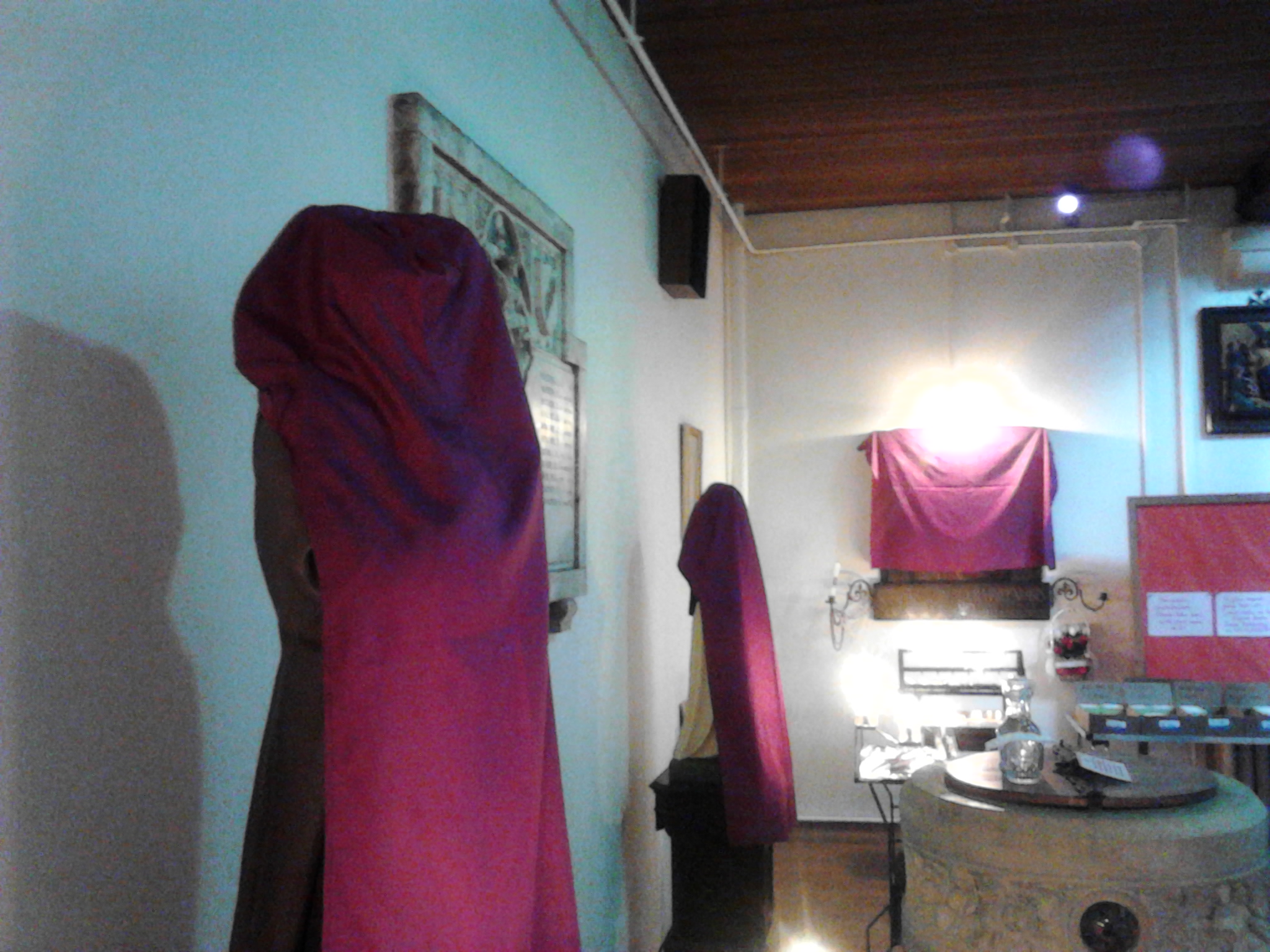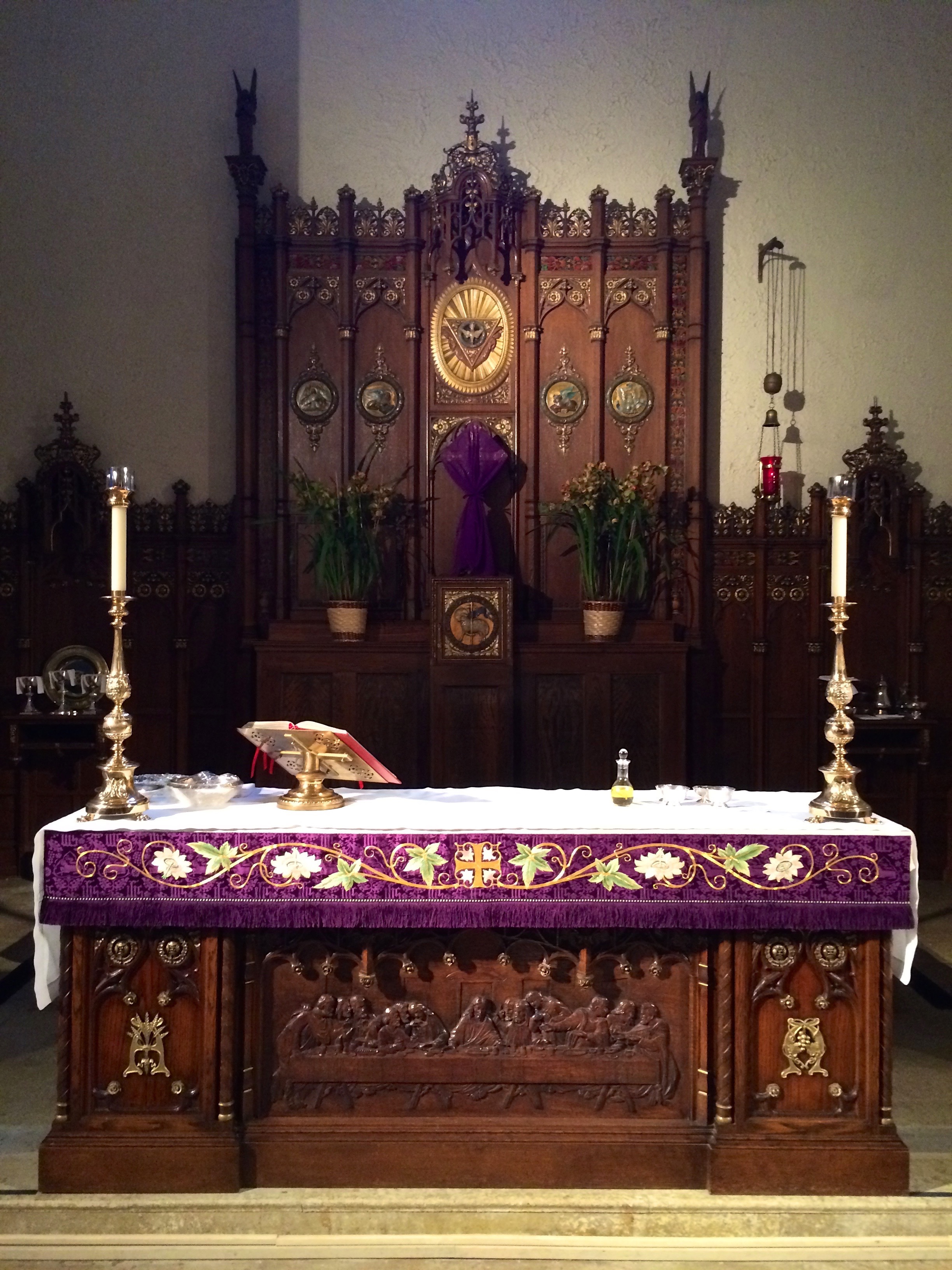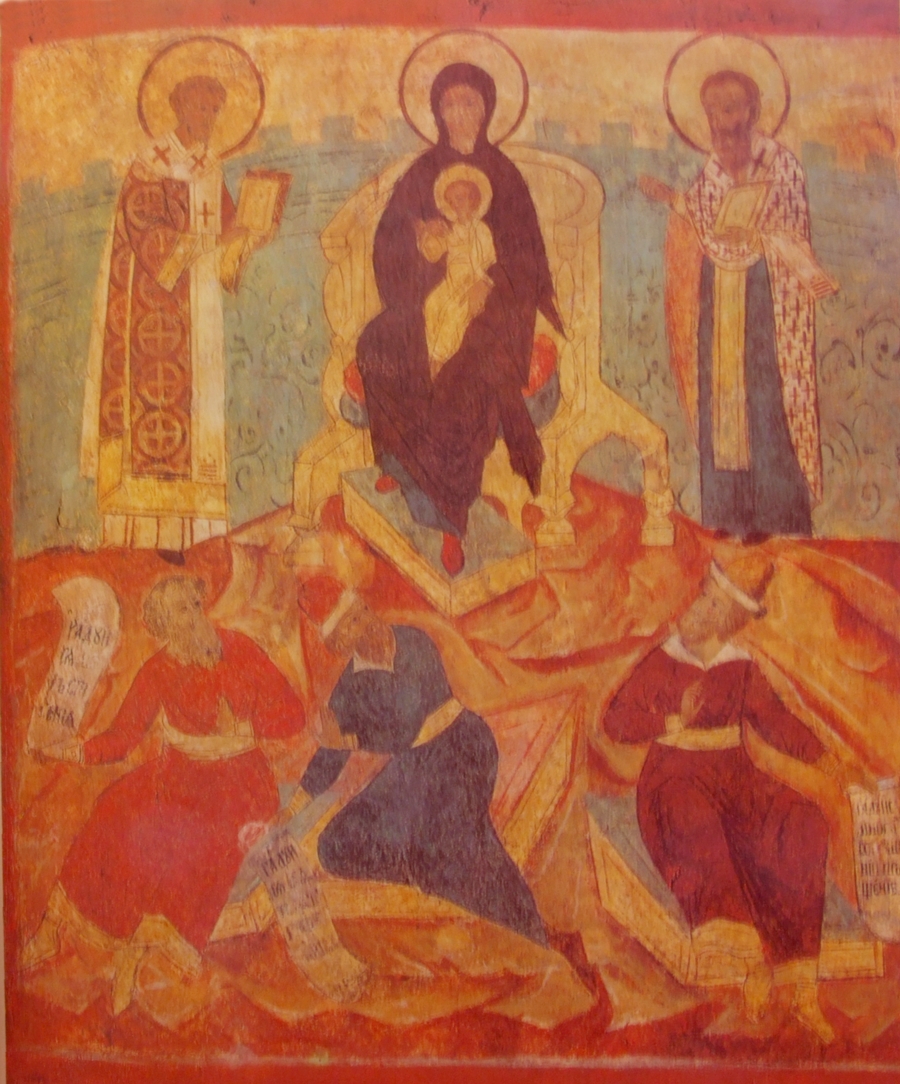|
Passiontide
Passiontide (in the Christian liturgical year) is a name for the last two weeks of Lent, beginning on the Fifth Sunday of Lent, long celebrated as Passion Sunday, and continuing through Lazarus Saturday. The second week of Passiontide is Holy Week, ending on Holy Saturday. History "Passiontide" refers to the last two weeks of Lent. According to Cyril of Scythopolis, during this time the monks of the East, who had chosen the desert for a severer mode of life, returned to their monasteries. In certain countries, such as Brazil and Italy, it is seen as the beginning of the Holy Week observances. The ''Viernes de Dolores'' (Friday of Sorrows) is a solemn pious remembrance of the sorrowful Blessed Virgin Mary on the Friday before Palm Sunday held in the fifth week of Lent. In the Orthodox Church, the Fifth Saturday of Great Lent is known as the Saturday of the Akathist, when the "Akathist to the Theotokos" is sung at Compline. Observance In the Roman Catholic Church, Western Rite ... [...More Info...] [...Related Items...] OR: [Wikipedia] [Google] [Baidu] |
Passion Sunday
Passion Sunday is the fifth Sunday of Lent, marking the beginning of Passiontide. In 1969, the Roman Catholic Church removed Passiontide from the liturgical year of the Novus Ordo, but it is still observed in the Extraordinary Form, the Personal Ordinariates, the Anglican Communion, and by Lutherans. In Scotland, the day is known as Care Sunday. Fifth Sunday of Lent Until 1959, the fifth Sunday of Lent was officially known in the Roman Catholic Church as Passion Sunday. It marked the beginning of a two-week-long period known as Passiontide, which is still observed by Catholics who attend the Extraordinary Form or Catholics of the Anglican Ordinariate, Western Rite Orthodoxy, various denominations in Protestantism. In 1960, Pope John XXIII's Code of Rubrics changed the name for that Sunday to "First Sunday of the Passion" bringing the name into harmony with the name that Pope Pius XII gave, five years earlier, to the sixth Sunday of Lent, "Second Sunday of the Passion or Pa ... [...More Info...] [...Related Items...] OR: [Wikipedia] [Google] [Baidu] |
Lenten Shrouds
Lent ( la, Quadragesima, 'Fortieth') is a solemn religious observance in the liturgical calendar commemorating the 40 days Jesus spent fasting in the desert and enduring temptation by Satan, according to the Gospels of Matthew, Mark and Luke, before beginning his public ministry. Lent is observed in the Anglican, Eastern Orthodox, Lutheran, Methodist, Moravian, Oriental Orthodox, Persian, United Protestant and Roman Catholic traditions. Some Anabaptist, Baptist, Reformed (including certain Continental Reformed, Presbyterian and Congregationalist churches), and nondenominational Christian churches also observe Lent, although many churches in these traditions do not. Which days are enumerated as being part of Lent differs between denominations (see below), although in all of them Lent is described as lasting for a total duration of 40 days. In Lent-observing Western Churches, Lent begins on Ash Wednesday and ends approximately six weeks later; depending on the Chris ... [...More Info...] [...Related Items...] OR: [Wikipedia] [Google] [Baidu] |
Lent
Lent ( la, Quadragesima, 'Fortieth') is a solemn religious observance in the liturgical calendar commemorating the 40 days Jesus spent fasting in the desert and enduring temptation by Satan, according to the Gospels of Matthew, Mark and Luke, before beginning his public ministry. Lent is observed in the Anglican, Eastern Orthodox, Lutheran, Methodist, Moravian, Oriental Orthodox, Persian, United Protestant and Roman Catholic traditions. Some Anabaptist, Baptist, Reformed (including certain Continental Reformed, Presbyterian and Congregationalist churches), and nondenominational Christian churches also observe Lent, although many churches in these traditions do not. Which days are enumerated as being part of Lent differs between denominations (see below), although in all of them Lent is described as lasting for a total duration of 40 days. In Lent-observing Western Churches, Lent begins on Ash Wednesday and ends approximately six weeks later; depending on the Christian ... [...More Info...] [...Related Items...] OR: [Wikipedia] [Google] [Baidu] |
Liturgical Year
The liturgical year, also called the church year, Christian year or kalendar, consists of the cycle of liturgical seasons in Christian churches that determines when feast days, including celebrations of saints, are to be observed, and which portions of Scripture are to be read either in an annual cycle or in a cycle of several years. Distinct liturgical colours may be used in connection with different seasons of the liturgical year. The dates of the festivals vary somewhat among the different churches, although the sequence and logic is largely the same. Liturgical cycle The liturgical cycle divides the year into a series of seasons, each with their own mood, theological emphases, and modes of prayer, which can be signified by different ways of decorating churches, colours of paraments and vestments for clergy, scriptural readings, themes for preaching and even different traditions and practices often observed personally or in the home. In churches that follow the litu ... [...More Info...] [...Related Items...] OR: [Wikipedia] [Google] [Baidu] |
Tridentine Mass
The Tridentine Mass, also known as the Traditional Latin Mass or Traditional Rite, is the liturgy of Mass in the Roman Rite of the Catholic Church that appears in typical editions of the Roman Missal published from 1570 to 1962. Celebrated almost exclusively in Ecclesiastical Latin, it was the most widely used Eucharistic liturgy in the world from its issuance in 1570 until the introduction of the Mass of Paul VI (promulgated in 1969, with the revised Roman Missal appearing in 1970). The edition promulgated by Pope John XXIII in 1962 (the last to bear the indication ''ex decreto Sacrosancti Concilii Tridentini restitutum'') and Mass celebrated in accordance with it are described in the 2007 motu proprio '' Summorum Pontificum'' as an authorized form of the Church's liturgy, and sometimes spoken of as the Extraordinary Form, or the ''usus antiquior'' ("more ancient usage" in Latin). "Tridentine" is derived from the Latin ''Tridentinus'', "related to the city of Tridentum" (mode ... [...More Info...] [...Related Items...] OR: [Wikipedia] [Google] [Baidu] |
Holy Week
Holy Week ( la, Hebdomada Sancta or , ; grc, ß╝ē╬│╬»╬▒ ╬║╬▒ßĮČ ╬£╬Ą╬│╬¼╬╗╬Ę ß╝Ö╬▓╬┤╬┐╬╝╬¼Žé, translit=Hagia kai Megale Hebdomas, lit=Holy and Great Week) is the most sacred week in the liturgical year in Christianity. In Eastern Churches, which includes Eastern Orthodox, Eastern Catholic and Eastern Lutheran traditions, Holy Week occurs the week after Lazarus Saturday and starts on the evening of Palm Sunday. In the denominations of the Western Christianity, which includes the Roman Catholicism, Lutheranism, Moravianism, Anglicanism, Methodism and Reformed Christianity, it begins with Palm Sunday and concludes on Easter Sunday. For all Christian traditions it is a moveable observance. In Eastern Rite Churches, Holy Week starts after 40 days of Lent and two transitional days, namely Saturday of Lazarus (Lazarus Saturday) and Palm Sunday. In the Western Christian Churches, Holy Week falls on the last week of Lent or Sixth Lent Week. Holy Week begins with the commemoratio ... [...More Info...] [...Related Items...] OR: [Wikipedia] [Google] [Baidu] |
Friday Of Sorrows
The Friday of Sorrows is a solemn pious remembrance of the sorrowful Blessed Virgin Mary on the Friday before Palm Sunday held in the fifth week of Lent (formerly called "Passion Week"). In the Anglican Ordinariate's Divine Worship: The Missal it is called ''Saint Mary in Passiontide'' and sometimes it is traditionally known as ''Our Lady in Passiontide''. In certain Catholic countries, especially in Mexico, Guatemala, Italy, Peru, Brazil, Spain, Malta, and the Philippines, it is the beginning of the Holy Week celebrations and termed as ''Viernes de Dolores'' (Friday of Sorrows). It takes place exactly one week before Good Friday, and concentrates on the emotional pain that the Passion (Christianity), Passion of Jesus Christ caused to his mother, the Blessed Virgin Mary, who is venerated under the title Our Lady of Sorrows. In certain Spanish-speaking countries, the day is also referred to as Council Friday, because of the choice of as the Gospel passage read in the Tridentine M ... [...More Info...] [...Related Items...] OR: [Wikipedia] [Google] [Baidu] |
Easter Vigil
Easter Vigil, also called the Paschal Vigil or the Great Vigil of Easter, is a liturgy held in traditional Christian churches as the first official celebration of the Resurrection of Jesus. Historically, it is during this liturgy that people are baptized and that adult catechumens are received into full communion with the Church. It is held in the hours of darkness between sunset on Holy Saturday and sunrise on Easter Day ŌĆō most commonly in the evening of Holy Saturday or midnight ŌĆō and is the first celebration of Easter, days traditionally being considered to begin at sunset. Among liturgical Western Christian churches including the Roman Catholic Church, the Lutheran Churches, the Reformed Churches, the Anglican Communion and the Methodist Churches, the Easter Vigil is the most important liturgy of public worship and Mass of the liturgical year, marked by the first use since the beginning of Lent of the exclamatory "Alleluia", a distinctive feature of the Easter season. In ... [...More Info...] [...Related Items...] OR: [Wikipedia] [Google] [Baidu] |
Blessed Virgin Mary
Mary; arc, ▄Ī▄¬▄Ø▄Ī, translit=Mariam; ar, ┘ģž▒┘Ŗ┘ģ, translit=Maryam; grc, ╬£╬▒Žü╬»╬▒, translit=Mar├Ła; la, Maria; cop, Ō▓śŌ▓üŌ▓ŻŌ▓ōŌ▓ü, translit=Maria was a first-century Jewish woman of Nazareth, the wife of Joseph and the mother of Jesus. She is a central figure of Christianity, venerated under various titles such as virgin or queen, many of them mentioned in the Litany of Loreto. The Eastern and Oriental Orthodox, Church of the East, Catholic, Anglican, and Lutheran churches believe that Mary, as mother of Jesus, is the Mother of God. Other Protestant views on Mary vary, with some holding her to have considerably lesser status. The New Testament of the Bible provides the earliest documented references to Mary by name, mainly in the canonical Gospels. She is described as a young virgin who was chosen by God to conceive Jesus through the Holy Spirit. After giving birth to Jesus in Bethlehem, she raised him in the city of Nazareth in Galilee, and was in Jeru ... [...More Info...] [...Related Items...] OR: [Wikipedia] [Google] [Baidu] |
Palm Sunday
Palm Sunday is a Christian moveable feast that falls on the Sunday before Easter. The feast commemorates Christ's triumphal entry into Jerusalem, an event mentioned in each of the four canonical Gospels. Palm Sunday marks the first day of Holy Week. For adherents of mainstream Christianity, it is the last week of the Christian solemn season of Lent that precedes the arrival of Eastertide. In most liturgical churches, Palm Sunday is celebrated by the blessing and distribution of palm branches (or the branches of other native trees), representing the palm branches which the crowd scattered in front of Christ as he rode into Jerusalem; these palms are sometimes woven into crosses. The difficulty of procuring palms in unfavorable climates led to their substitution with branches of native trees, including box, olive, willow, and yew. The Sunday was often named after these substitute trees, as in Yew Sunday, or by the general term Branch Sunday. In Syriac Christianity it is often c ... [...More Info...] [...Related Items...] OR: [Wikipedia] [Google] [Baidu] |
Christianity
Christianity is an Abrahamic monotheistic religion based on the life and teachings of Jesus of Nazareth. It is the world's largest and most widespread religion with roughly 2.38 billion followers representing one-third of the global population. Its adherents, known as Christians, are estimated to make up a majority of the population in 157 countries and territories, and believe that Jesus is the Son of God, whose coming as the messiah was prophesied in the Hebrew Bible (called the Old Testament in Christianity) and chronicled in the New Testament. Christianity began as a Second Temple Judaic sect in the 1st century Hellenistic Judaism in the Roman province of Judea. Jesus' apostles and their followers spread around the Levant, Europe, Anatolia, Mesopotamia, the South Caucasus, Ancient Carthage, Egypt, and Ethiopia, despite significant initial persecution. It soon attracted gentile God-fearers, which led to a departure from Jewish customs, and, a ... [...More Info...] [...Related Items...] OR: [Wikipedia] [Google] [Baidu] |
Akathist
An Akathist Hymn ( el, ß╝ł╬║╬¼╬Ė╬╣ŽāŽä╬┐Žé ßĮØ╬╝╬Į╬┐Žé, "unseated hymn") is a type of hymn usually recited by Eastern Orthodox or Eastern Catholic Christians, dedicated to a saint, holy event, or one of the persons of the Holy Trinity. The name derives from the fact that during the chanting of the hymn, or sometimes the whole service, the congregation is expected to remain standing in reverence, without sitting down (ß╝Ć-, ''a-'', "without, not" and ╬║╬¼╬Ė╬╣Žā╬╣Žé, ''k├Īthisis'', "sitting"), except for the aged or infirm. During Eastern Catholic and Orthodox Christian religious services in general, sitting, standing, bowing and the making of prostrations are set by an intricate set of rules, as well as individual discretion. Only during readings of the Gospel and the singing of Akathists is standing considered mandatory for all. History The Akathist is also known by the first three words of its ''prooimion'' (preamble), ''T├¬i hyperm├Īch┼Źi strateg├┤i'' (╬żß┐ć ßĮæŽĆ╬ĄŽü╬╝╬¼Žćß ... [...More Info...] [...Related Items...] OR: [Wikipedia] [Google] [Baidu] |








